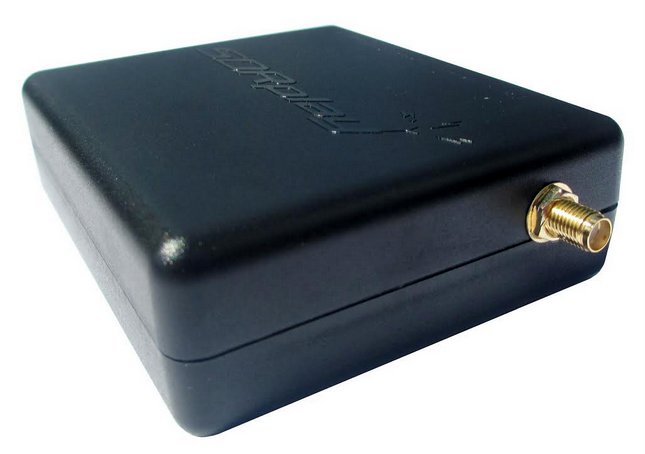 RF filters are used (as the name implies) to filter/remove the frequencies you are not interested in and/or let frequencies you want pass . They come in lots of types. For example a band-pass filter lets the signals in a frequency range to pass through it and rejects/attenuates other frequencies. The opposite of band-pass filter is a band-reject or band-stop filter (also called a notch filter) which rejects/attenuates signals in a specific range and lets other frequencies get through the filter. Lots of different filters are used in SDRs and traditional radios. For example AM low-pass filters (only let frequencies lower than 1.7MHZ or so pass) or band-pass filters for various ham radio bands.
RF filters are used (as the name implies) to filter/remove the frequencies you are not interested in and/or let frequencies you want pass . They come in lots of types. For example a band-pass filter lets the signals in a frequency range to pass through it and rejects/attenuates other frequencies. The opposite of band-pass filter is a band-reject or band-stop filter (also called a notch filter) which rejects/attenuates signals in a specific range and lets other frequencies get through the filter. Lots of different filters are used in SDRs and traditional radios. For example AM low-pass filters (only let frequencies lower than 1.7MHZ or so pass) or band-pass filters for various ham radio bands.
One of the popular use cases for a notch filter is in the FM broadcast range (88-108 MHZ in most parts of the world)
When you live near a powerful transmitter, it can affect the operation of your receiver in other near frequencies (or overload your receiver’s front-end), but I didn’t want the notch filter for this reason. I’ve got a SDRPlay RSP1 (among many other SDRs) which due to its architecture, has some images of FM band in the UHF range (for example in 330-350 MHZ). In fact they’re the images of the product of LO harmonics and FM frequencies.
You can temporarily move/shift the frequency by changing the LO frequency which does not remove them, but moves them around.
Another method to remove these images is using a band-stop filter.
This is the filter I’m using (Thanks to my friend Amirhosein Hasanpur who designed and built it):
Here you can see the effect of using a FM notch filter on my SDRPlay RSP1:
FM, without filter:
FM, with filter:
UHF (images) without filter:
UHF (images) with filter:
Here’s a link to a Zip file containing the PCB (in Protel), schematics (pdf) and S Parameters (pdf):
https://www.dropbox.com/s/l98kylrofohgqxf/SWLing.zip?dl=0
Note: Like any other SDR test/review, the results depend on lots of different parameters (various gain values, LNA, antenna, software, etc). These pictures are captured with the same conditions just to show the effectiveness of this filter and your milage will definitely vary, but expect a similar outcome. If you live close to a powerful transmitter or use LNAs, you will receive some signals, even when using the filter.
Final note: this issue is solved in the newer version of SDRPlay (RSP2) : it has software-selectable notch filters for FM and MW broadcast frequencies.
Mehdi Asgari, the author of this post, is a regular contributor to the SWLing Post. Mehdi lives in Tehran and is an active member of the EP2C amateur radio club.

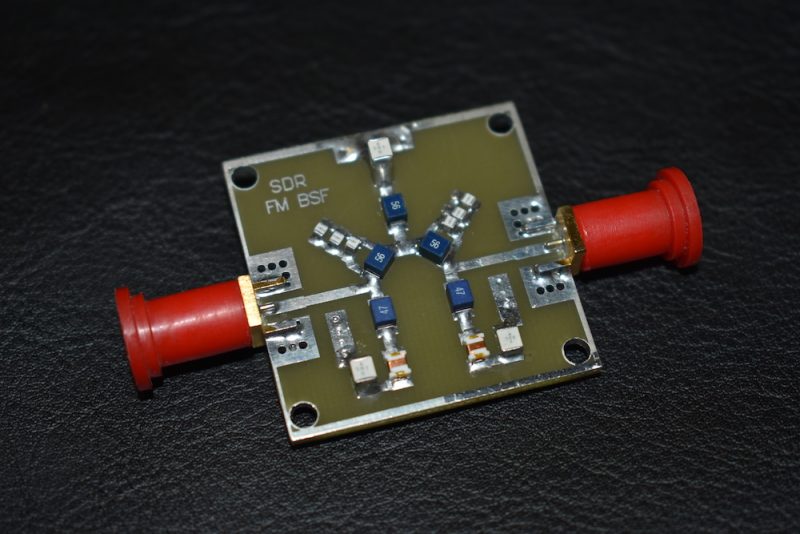
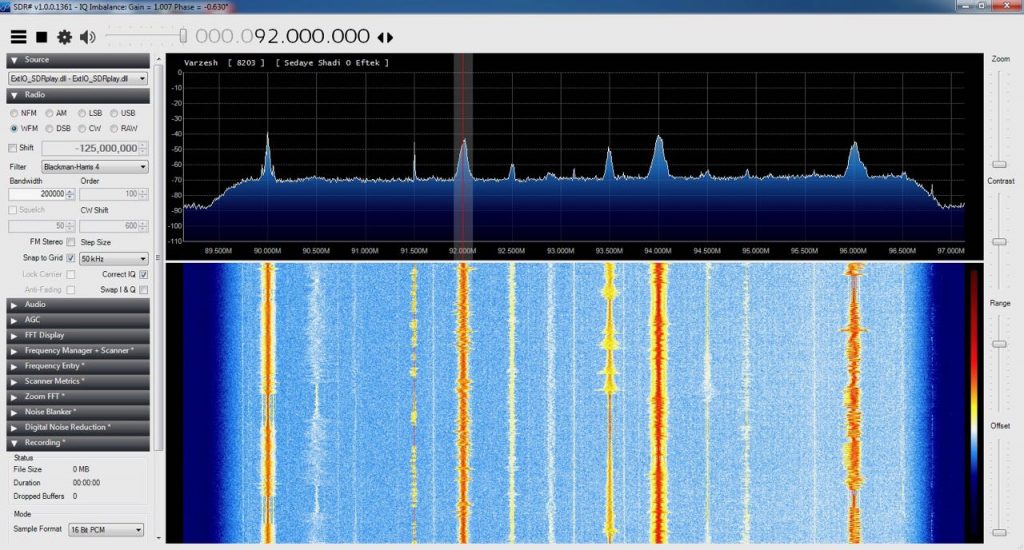

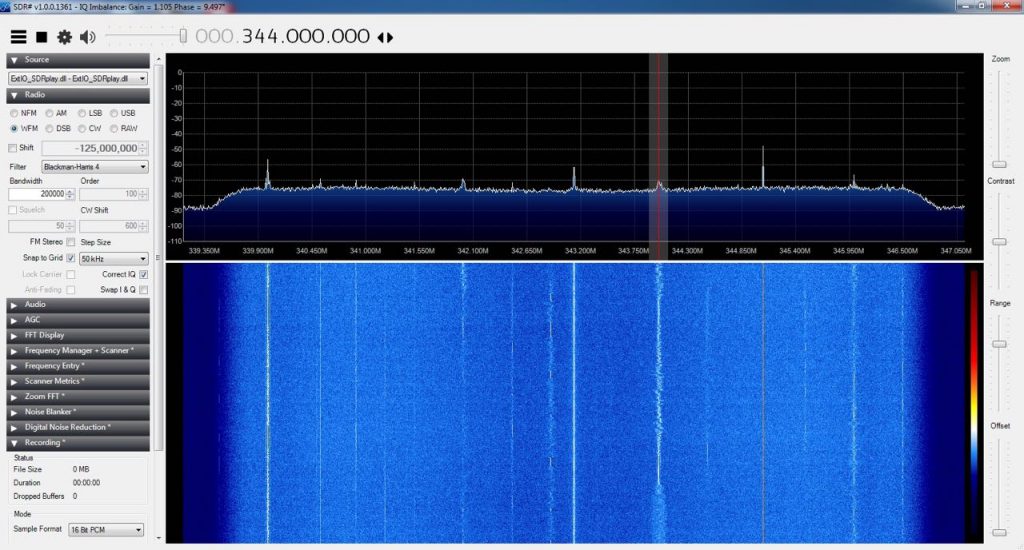
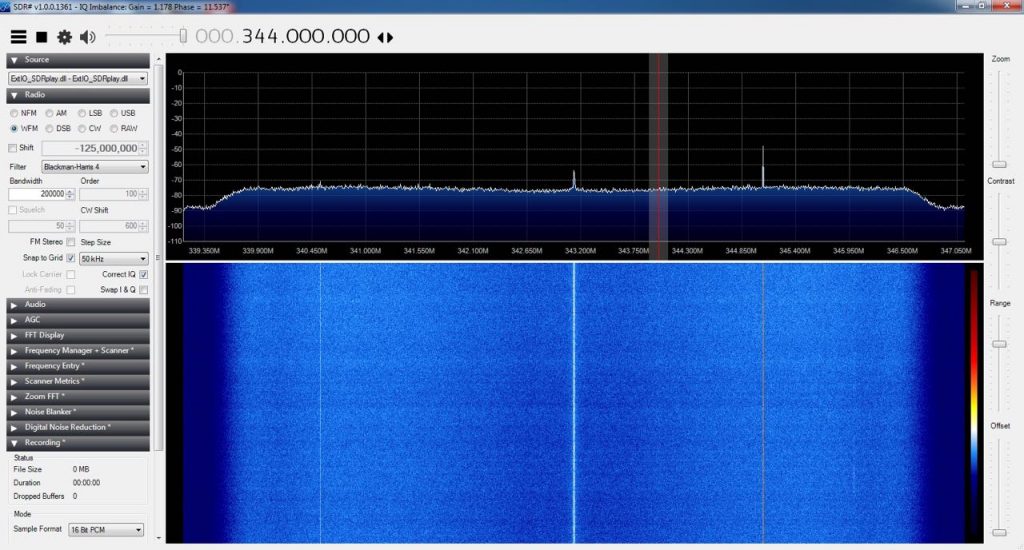
Hi Mehdi,
the dropbox link to SWLing.zip is no longer working!
can you “repair” it?
I would like to built the filter.
i2NDT Claudio
You are correct about harmonics of the local oscillator tuning FM into the 300 mhz cleaning up LO will do more than an FM notch filter.
Hi Sajjad
Of course not. A well-designed (and built) notch filter should only attenuate the frequencies it’s designed to stop and have no noticeable effect on other frequencies. You can build the desired filter for the desired frequency range (with consideration of lots of details in construction especially in higher frequencies)
Hi Mehdi and thanks for perfect details.
I was thinking about notch filters and a question came to me that may notch filters stop other bands that they shouldn’t to?
for example: an FM notch filter may stop frequencies around 6 or 10 Ghz (or other ranges)?
Hi Guys . . .
The Band stop filters can reject your Desired frequencies by design. when you want cancel the FM Band (88-108 MHz) , must be selected the components ( indutors & Capacitors) for passing another frequencies before FM band and After FM band with minimum attunation about 0 dB in best situation and attunation in desired frequeny is about -40 dB.
Best 73’s .
Aa I have written before: A bad weakness of the RSP1 is the LNA that is always used from 60 MHz up. Depending on your surroundigs any broadcast transmitter up to 220 MHz could be the main reason for such problems.
I agree with you about the LNA, but this specific issue has nothing to do with the internal LNA and is a result of the solution used by SDRPlay to cover the 250-420 MHZ gap it had in its earlier firmware versions.